Finding My Style
I’ve been through stages in my practice of photography, which I’ve been doing on and off for at least 20 years now. I want to talk about my journey toward finding “a style,” why you might want to do it too, and how your art aligns or overlaps with commercial and social interests.
I’ll try to keep this focused and brief, though there are some topics in here I’ve been thinking about for years, so there may be jumping-off points for separate posts. If such an area interests you, please comment and let me know!
Why do people talk about style?
The context for this post is that I have a close friend who has been leaning into his photography as a source of income. We talk pretty often and a recurring theme in discussing how to increase the exposure of his work is “style,” which in my mind is the artist’s version of “a brand.”
Another recurring theme in our discussions is what I’ll call “artistic intent,” which is simply making a thing that you want to make, the world be damned.
These two concepts are, quite often and at least for me, at odds with one another. On the one hand, as an artist, you should make what you want to make. Make the things that tell the story you want to tell, or that evoke the emotions you want to evoke.
On the other hand, if you wish to generate attention (and in the commercial sense, sales), you have to have a discrete “product.” Five hundred seemingly random images of seemingly random things with no “connective tissue” doesn’t feel like a “product” and may be hard to get people excited about.
The more commercially successful artists always have an angle, a subject, a theme, a visual style. That helps them find an audience interested in that particular thing, and helps them have a marketing conversation with that audience. Without that, you’re not having a conversation, you’re mumbling to yourself incoherently while onlookers try to figure out what, exactly, you’re on about.
Who cares if people are excited?
I believe this is the core question when thinking about your style or brand as an artist: do you care if people are excited about your work? Do you want more people to be excited?
If you don’t care what anyone thinks, and you don’t care how many people are looking, and you never want to exhibit or sell your work publicly on any scale… More power to you! You can probably stop reading this now.
That was me, for a long time (not giving a damn), and I still feel a little bit conflicted even today, which is why I wanted to put this into writing and hear what you think about it.
My style journey
It’s worth noting that I was a young man when I started out, and had no aspirations in photography other than to explore my visual interests and learn to be better at the craft. That set me up for what was, for sure, a meandering journey.
I started actually practicing photography when I got my first DSLR camera (an Olympus E-20) in 2003; I would have been 22 years old (now you know how old I am). Non-interchangeable zoom lens, pop-up flash, the whole nine yards. I got out and started taking pictures. I was instantly hooked.
It took me less than a month before I realized I needed something more, so I went out and bought a brand new Canon EOS-10D. At the time, one of the most expensive things I’d ever bought.
My 10D years were fruitful. I took hundreds and hundreds of photographs. Most of them, JPEGs. Adobe shipped a beta of Lightroom in 2006 and I got into it. I started organizing. About 1,900 of the 10D photos got into Lightroom (which means I liked them enough to import them), and I was on a roll.
Here’s a photo I took in 2004 on a walk around my neighborhood, something I used to do simply as an excuse to try to take pictures. Notably, this is how I post-processed the photo at that time, which is a treatment I still find pleasing today. I really like the overhead wires cutting up the negative space at the top. I have no idea if I planned it that way.

During those years, I was traveling with an intent to take pictures. That wasn’t always the sole purpose of the trip, but it was a stated purpose. Manhattan, Chicago, nearby parks and waterfronts and cities. I bought studio equipment like a paper backdrop stand, strobes, and so forth, and experimented with photographing people, learning how to pose, etc. I started reading “The Strobist” religiously. I started this blog (September, 2005).
I upgraded to a 5D, and a couple years later, to a 1Ds Mark III.
I was photographing anything that seemed interesting. Artistically, technically, or otherwise.
That is how I approached my photography for the next 15 years.
The “serious” travel phase
I began taking regular trips around the country with that same friend of mine. We visited numerous national parks and a few cities. My friend has always been drawn toward what I’ll term “traditional” landscapes, which is to say the kind of thing you probably think of when you think “landscape photograph.”
We got up before dawn, we stayed up after sunset, we scouted locations, we did it “properly.” I still love a lot of the work that I made during those trips.
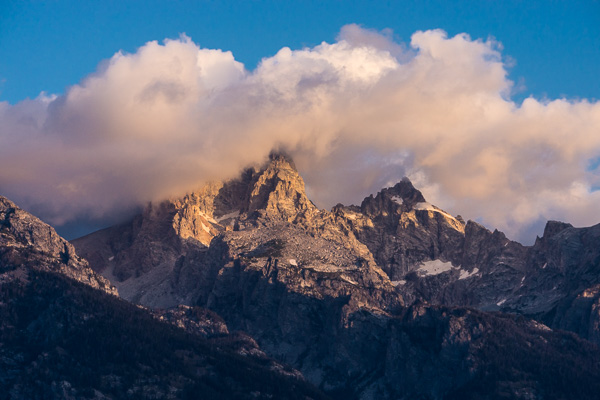
But even as our technical understanding continued to improve and our discipline to seek out grand and stunning locations tightened, I still found myself drawn to certain other kinds of things. Symmetry. Geometry. Contrast. Texture.
I didn’t seek those things out deliberately, but I tended to find them wherever I was.
Here’s a classic example. On a trip to Chicago, I took a fair number of these “pretty clouds” type of photos that have been a big part of my work for ages.
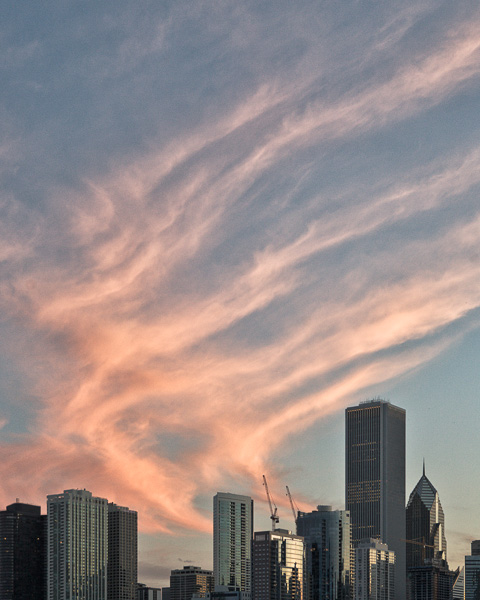
But on the same trip, I would always produce something more like this:
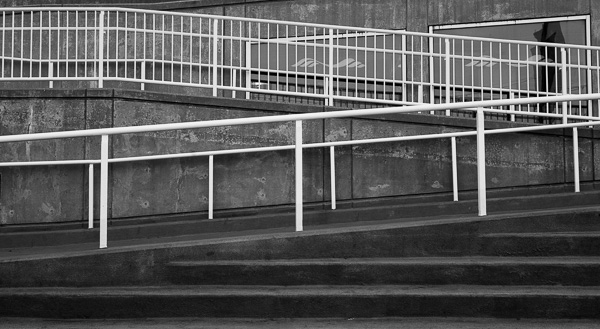
You see the geometry, symmetry, and contrast I was talking about? That’s always been there, even when my conscious mind is saying get up early and make a dawn skyline photo! This one seems to have a fair bit in common with the excavator arm from 2004.
This went on for years and years. Traveling to a place, getting up before dawn, making “stunning” traditional landscapes. Walking around during the day, finding things at random that struck me, and making contrasty black-and-whites or perfectly sidelong views that I’d later warp in Photoshop to remove all sense of perspective.
Leaning into a style
That brings us to about 2019. It was a good year. We took a trip to Seattle and Olympic National Park and I made some of my most stunning landscapes. I was really leaning into capturing my home city of Boston, and experimenting with more in-depth post-processing techniques, the “cyberpunk” look, inserting 3D rendered human subjects, and more.
It was a good year for visual exploration for me.
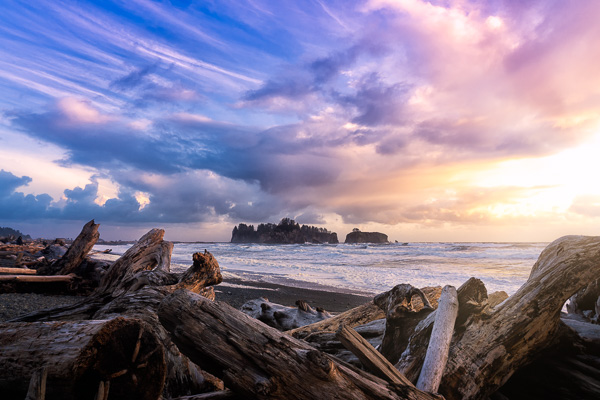
In that year, my friend decided he wanted to take his daughter (then about 10 years old) to every US National Park before she turned 18. A tall order. With that commitment came a sharp uptick in travel and landscape photography on his end, about which we conversed frequently. He has always sought my feedback, which I’m honored to provide.
The covid-19 pandemic put a brief hiatus on all of our talk of photography, but midway through 2020, he felt it was safe enough to travel again… And cheap! So their travels resumed and we started talking about our styles more and more.
We would have these conversations centered around how to get more gallery website traffic, or how to sell a photo book, or how to be successful showing at art fairs. These commercial interests, in my mind, necessitate the development of a clear style. Without some meaningful similarities among the work, how can you target your audience and build up that loyalty network?
What I mean is, if all of your stuff is visually different, you will have a harder time finding the people who like any single piece, and you will have a harder time building word-of-mouth momentum because your audience doesn’t have a ton of friends who all want to buy the exact same piece they did.
If, instead, you have developed a style, you will find a group of people who enjoy that style, and they can share it with like-minded people they know, who will find a robust portfolio to choose from. You can build campaigns around that style, creating a language that you use to describe your work, and helping to connect it to your audience in some way.
We talked about this a lot. For many hours, cumulatively over months.
At some point during these chats, it occurred to me that I needed to take my own advice. I’ve never tried very hard to sell my work (and I still don’t), but I felt that I would benefit artistically from having an anchor, a focus.
Reflecting on the work that made me the most excited, I arrived back at the symmetry, geometry, contrast, and texture that have always drawn me in between the sunrise and sunset photos on all these trips.

The one above I made right before the pandemic started, around January 2020, before isolation sucked all the creativity right out of me.
I dove back into Lightroom.
Among all of the images I had published on my gallery, there were these abstract, symmetrical, geometric, textural black-and-whites. I’ve always loved them. They were always there, among the sunrises and sunsets.
I pivoted my gallery site to center on them. I filled the front page with only these, and I added a brief “artist’s statement” affirming that that’s what I’m all about.
I kept the sunrises, sunsets, prismatic springs, and mountains, but I shoved them all into sub-pages you need to find through the menu.
This is my style; this is what I want to make (mostly).
Where do we go from here?
So now what? Well, I’ll tell you, it feels quite liberating to accept that there is a kind of image that I always liked making and want to make more of, and I feel a sense of excitement about really leaning into that, and not stressing myself out over whether I can make a “great Boston cityscape” (or whatever).
My plan for 2021 is to be more deliberate about making the work that I like making, which actually means more wandering and less planning. Fewer tripods (I think) and a lot less waking up before dawn (an added benefit).
I suppose I’ll find out in due course whether this pivot benefits me in any material way, but at least superficially it is invigorating, even though all I’ve done is rearrange my website.
I’d like to hear from you. Do you have a “style?” How did you find it? Does it feel liberating or restrictive? Do you sell your work at all? Has a style helped or hurt your commercial success?
Please leave a comment below, or reach me on Twitter.
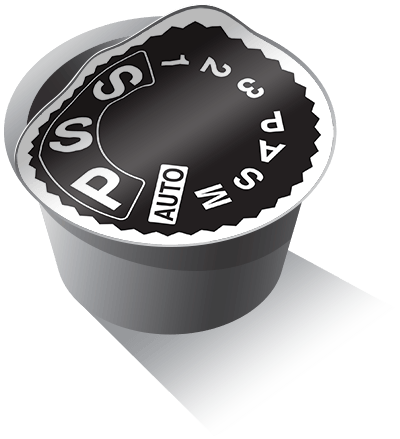 Single-Serving Photo
Single-Serving Photo
Comments